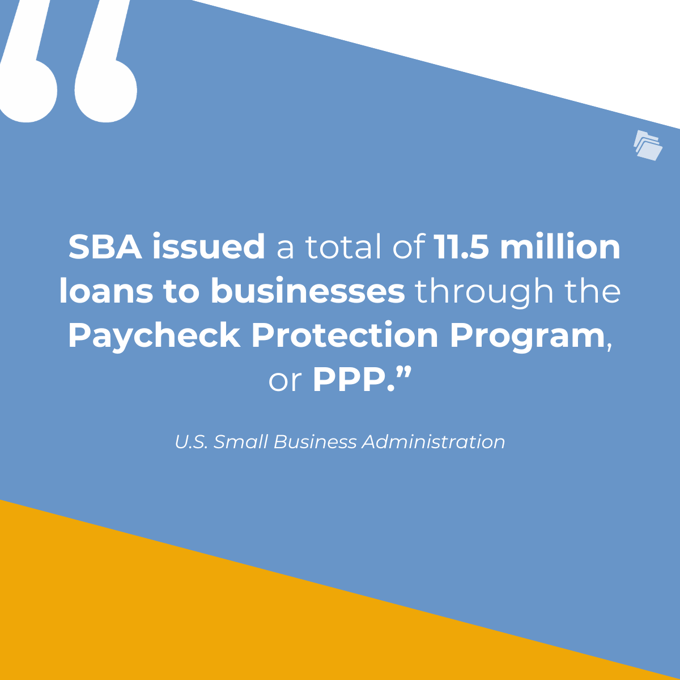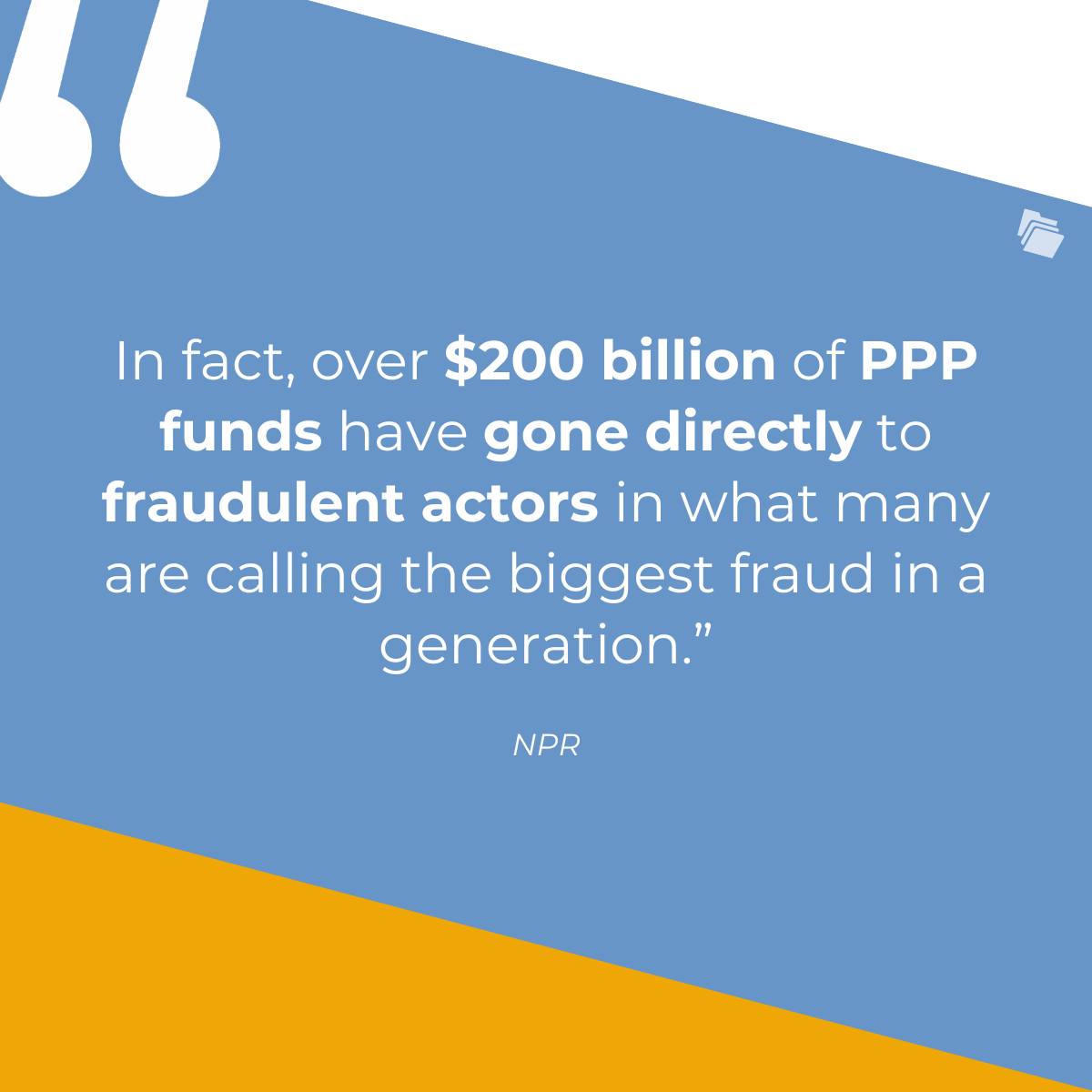The SBA 504 Loan: What Does Its Guarantee Mean for Borrowers?
Discover the benefits and limitations of SBA loan guarantees designed to assist small businesses.
Learn why the SBA's decision to forgo repayment on smaller PPP loans is causing outrage and debate.
During the COVID-19 pandemic, the Small Business Administration (SBA) issued a total of 11.5 million loans to businesses through the Paycheck Protection Program, or PPP.
The stated purpose of these loans was to allow employers to continue meeting their payroll expenses, but many businesses courted controversy by laying off staff and using the funds to buy cars, boats, and mansions instead.
Today, PPP loans are controversial for yet another reason: the SBA’s decision to not pursue repayment on loans under $100,000. While the SBA has defended its position as being economical and sensible, others are outraged that thousands of businesses took taxpayer money they don’t intend to return.
In this guide, we’ll be explaining why the SBA is getting heat over this decision, uncovering the history of the PPP loan program, and discussing the long-term effect this program had on small businesses and financial institutions.

When the SBA rolled out the Paycheck Protection Program as part of the CARES Act in 2020, it sounded good on paper: businesses who were struggling to meet payroll would have an influx of cash that they could use to meet their short-term obligations like rent and payroll. Once the pandemic ended and the economy rebounded, businesses would repay their loans.
From April 2020 to May 2021, businesses were eligible for PPP loans if they met certain criteria:
Businesses could use the funds from their PPP loan to pay up to 8 weeks of payroll (including benefits) or for other qualified expenses like mortgages, rent, and utilities. In reality, less than 35% of PPP loans actually ended up paying for payroll, despite that being the intended purpose of the loan program.
From its inception, the PPP included a pathway to loan forgiveness which required businesses to use at least 60% of the loan proceeds to cover payroll expenses. Businesses also had to provide thorough documentation, including the following resources:
This documentation proved to be a bottleneck in the loan processing and forgiveness process. This resulted in a heavy burden on the financial institutions who issued the loans, as well as in the SBA’s decision to not pursue repayment on some debts—two topics we will discuss in further detail.
In the aftermath of COVID-19 lockdowns, the SBA faced a growing problem: some businesses weren’t repaying their loans. In September 2022, citing the cost of pursuing repayment, the SBA announced they would end collections on PPP loans with an outstanding balance under $100,000 (a policy they would mirror a year later with EIDL loans).
When compared to the cost of collections, the SBA claimed that pursuing repayment from these relatively low-dollar-amount loans was not profitable for taxpayers. In other words, the SBA’s position is that the U.S. would save more money by not taking on the expense of recovering the loans than it would gain from repayment.
While the SBA says this decision makes sense from a profit/loss standpoint, it has proved controversial. Critics are upset that businesses are keeping taxpayer money, especially when the majority of PPP funds never ended up helping workers in the first place.
This latest controversy is arriving on the back of PPP’s already-controversial history.
The majority of PPP funds, about three-quarters of the $800 billion program, went to business owners and shareholders, their creditors, and their suppliers. Only around a quarter of PPP funds went to workers, in sharp contrast to the 60% minimum the SBA required for loan forgiveness.
In fact, over $200 billion of PPP funds have gone directly to fraudulent actors in what many are calling the biggest fraud in a generation. PPP recipients have spent loan money on personal cars, boats, and mansions, while still laying off employees—if they even ran a business at all. Other fraudsters collected PPP loans on behalf of non-operational businesses listed under their personal address, using the funds for personal expenditures.

Since the amount of documentation and paperwork required to complete due diligence on each of these loans would have been too much for banks to handle, the underwriting process was flattened. This made it easy for fake or non-operational businesses to get approved for PPP funds.
Under the original incarnation of the PPP loan program, businesses were only eligible for loan forgiveness if they used at least 60% of the loan to cover payroll expenses. As we’ve seen, that expectation was far from reality as only 25% of funds on average actually went to payroll.
This new decision makes loan forgiveness applications obsolete for businesses with less than $100,000 outstanding. Since the SBA is not pursuing repayment regardless of loan forgiveness status, businesses are, in effect, having their loans forgiven without having to go through the forgiveness application process. Many businesses that would otherwise be ineligible for loan forgiveness are de facto forgiven.
Still, others are outraged on principled grounds that many businesses took out PPP loans without ever intending to repay them. To them, SBA’s decision to not pursue repayment is rewarding the bad behavior of the most fraudulent and dishonest individuals.
While the SBA’s decision on delinquent PPP loans is understandably controversial, there is an upside.
Amid the crowd of fraudsters and opportunists, many businesses (and their employees) materially benefited from PPP loans—and continue to benefit from SBA’s decision to not pursue repayment. The impact on financial institutions has been varied but is mostly positive for the industry.
On the whole, businesses (and the individuals who own them) profited $757 billion from the PPP program—that’s the amount of PPP loans that the SBA has already forgiven. By January 2023, the SBA had forgiven 92% of all PPP loans.
PPP loans preserved 2-3 million job-years, but at a cost of as much as $258,000 per job-year.
Though the SBA cites administrative costs as a major reason they aren’t pursuing repayment on loans under $100,000, most of those costs were shouldered by the financial institutions that issued the loans. However, the impact on financial institutions was a financial net positive:
While the PPP loan program is one of the U.S.’s greatest financial disasters resulting in hundreds of billions of dollars of fraud and hundreds more billions of dollars in loss, it also preserved millions of jobs in the process—at least for a year.
Many of the major drawbacks of the PPP loan program were caused by the sheer volume of administrative work—it was a major expense for financial institutions and is one of the main factors the SBA cites for not pursuing repayment.
While problems like fraud and greed bedeviled PPP loans from the outset, the final nail in the coffin was simply too much paperwork.
FileInvite simplifies the document collection process for lenders — creating a secure environment where you can collect documents collaboratively.
Whether you’re collecting documents for PPP loan forgiveness or a different kind of loan, or simply conducting day-to-day business, FileInvite can simplify and optimize your document collection process, saving you time and money.
To learn more and request a demo, visit FileInvite today.
Discover the benefits and limitations of SBA loan guarantees designed to assist small businesses.
Discover the advantages of SBA 504 loans, enabling small businesses to seize growth opportunities through shared capital partnerships.
Discover the process of applying for an SBA 504 loan, with details on eligibility and necessary paperwork. Expect an average application timeline of...
Eliminate the monotony of back-and-forth emails and inefficient systems when gathering client information. Get hours back each week as FileInvite handles the most time-consuming work for you.
Get started in as little as 5 minutes.